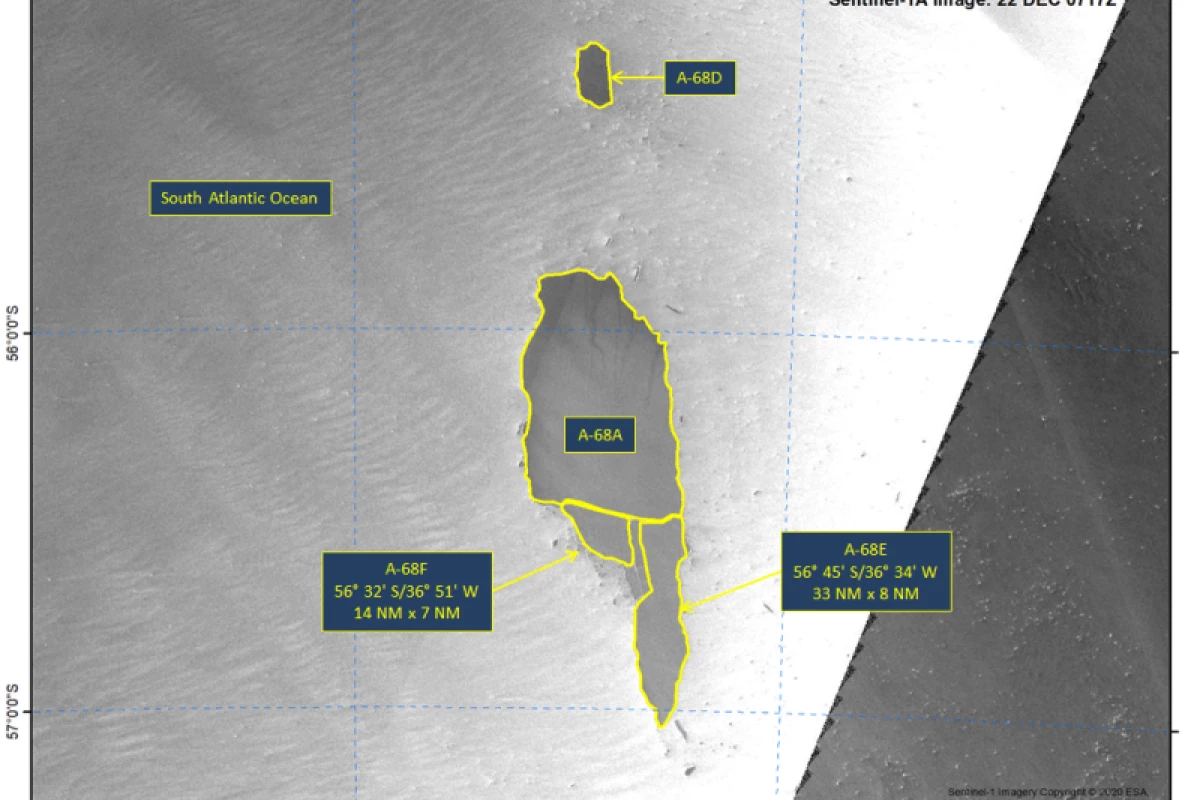The giant iceberg A-68A that is threatening the island of South Georgia in the South Atlantic has split into three pieces and is thinning by one inch (2.5 cm) per day. The US National Ice Center has confirmed that on December 21, 2020, two smaller icebergs, A-68D and A-68E, calved from the main berg and are floating in the open sea.
When A-68a broke away from Antarctica's Larsen-C ice shelf in July 2017, it was notable for being one of the largest bergs ever recorded. It was expected that it would drift until the powerful Atlantic currents swept it north to melt and break up. However, this year, satellite images and air reconnaissance flights showed that the giant iceberg was on a collision course with South Georgia, which is home to sustainable fishing grounds and is one of the world's largest marine conservation areas.

The fear is that if A-68a, which is now in the shallows around the island, runs aground, it could cause considerable environmental damage as it plows up the seabed, disrupts the feeding patterns of the local seals and penguins, and floods the sea with fresh water.
Because of this, scientists from the Centre for Polar Observation and Modelling at the University of Leeds have been making a running assessment of the state of A-68a and its offspring bergs using data from ESA’s CryoSat satellite radar altimeter and Copernicus Sentinel-1 satellite, and NASA's MODIS and ICESat-2 laser altimeter satellites.
Building up a detailed map, the team found that A-68 originally covered 2,187 square miles (5,664 sq km) and was on average 761 feet (232 m) thick. That works out to 352 cubic miles (1,467 cu km) of ice. Over its more than three years of drifting, it has split more than once, with the latest fragments measuring 33 by 8 nautical miles (38 miles by 9 miles, 61 km by 15 km) and 14 by 7 nautical miles (16 miles by 8 miles, 26 km by 13 km).
Now, A-68a has shrunk by 64 percent. It "only" covers 1,006 square miles (2,606 sq km) and is as much as 164 feet (50 m) thinner in places, giving it a volume of 126 cubic miles (526 cu km) and an ice keel 676 feet (206 m) deep.

This may seem like good news for South Georgia, but it's actually not. The smaller A-68a gets, the shallower its keel, so it can drift closer to the island, and the two calved bergs can come even closer before running aground because they are shallower still. In addition, A-68a is releasing 27,000 cubic feet (767 cu m) of fresh water per second into the sea – that's 12 times the outflow of the River Thames per second.
The Leeds team says it will continue to monitor the giant iceberg's progress.
"Icebergs can have major environmental impacts, including disturbing ocean circulation, marine ecosystems, and could block the route between penguin colonies and their feeding grounds during the breeding season," says Anne Brackmann-Folgmann, PhD student at the University of Leeds. "Thanks to CryoSat, we can track changes in their thickness, providing advance warning of when and where they might run aground."
Sources: ESA, US National Ice Center






